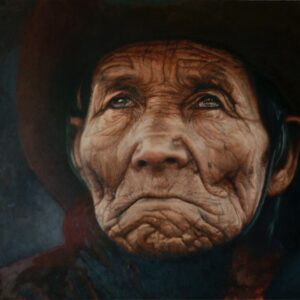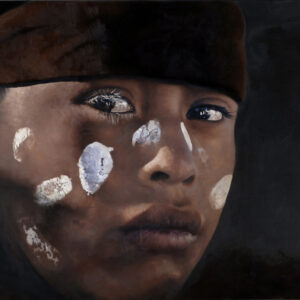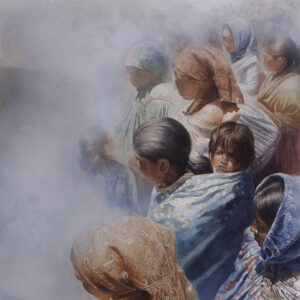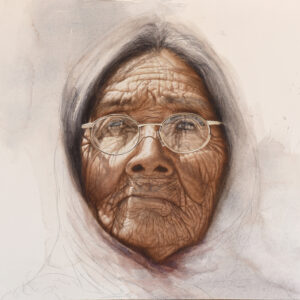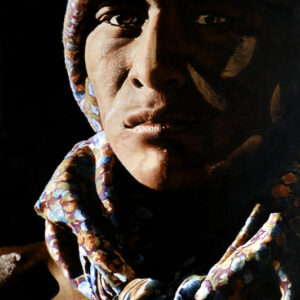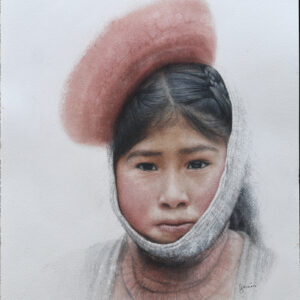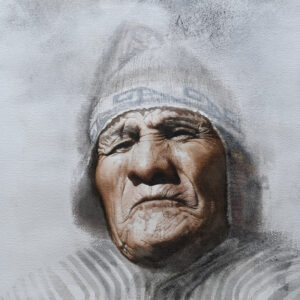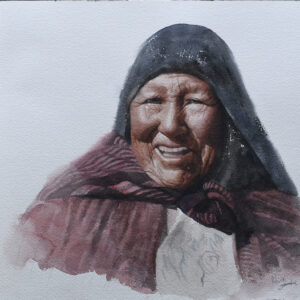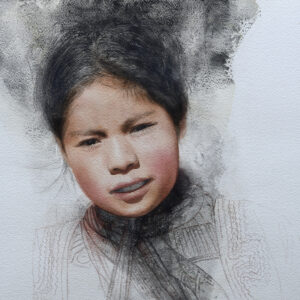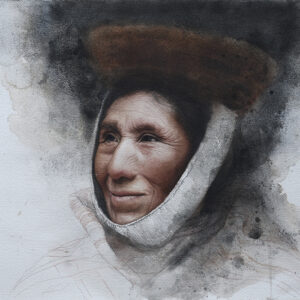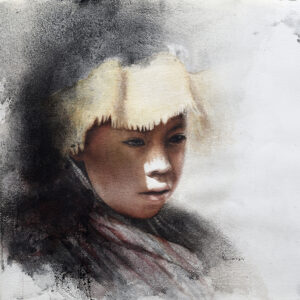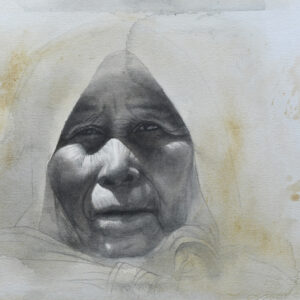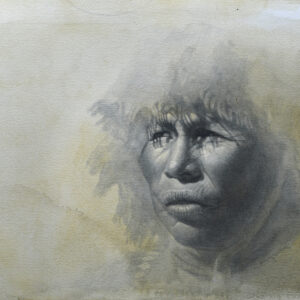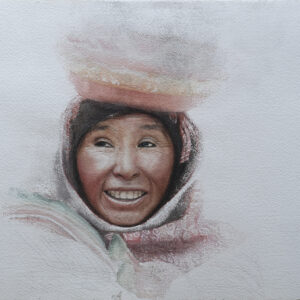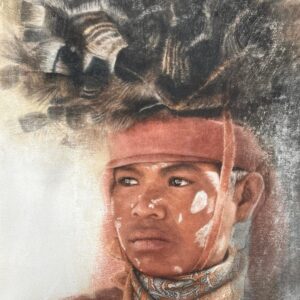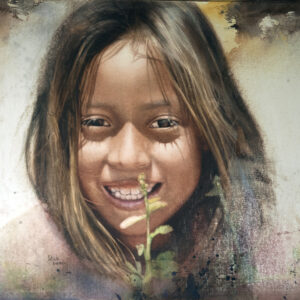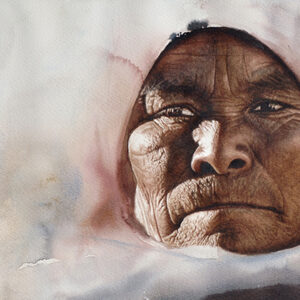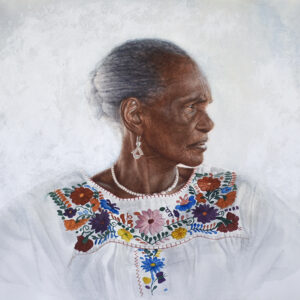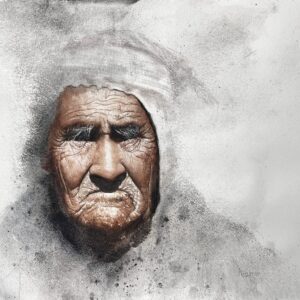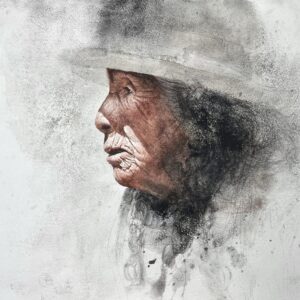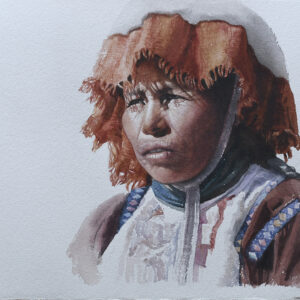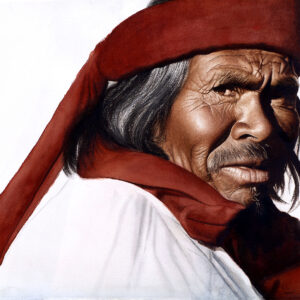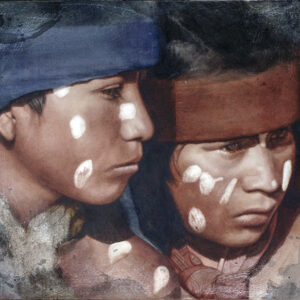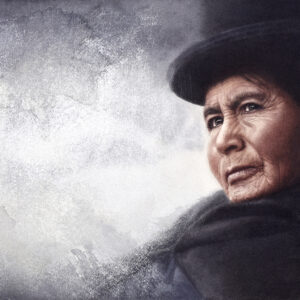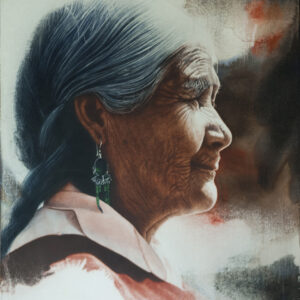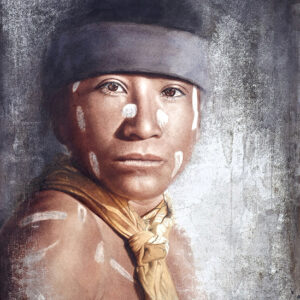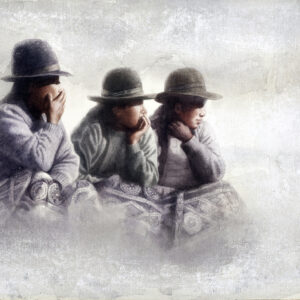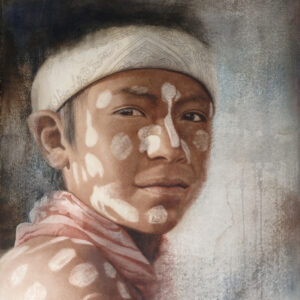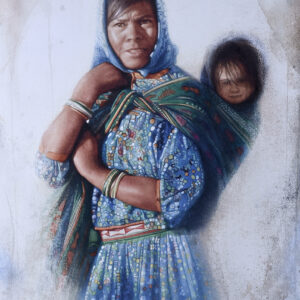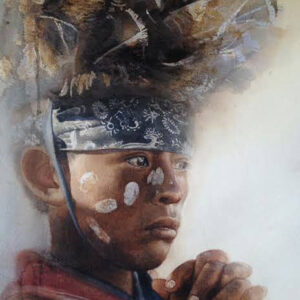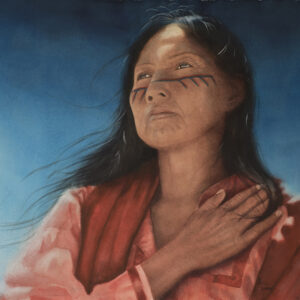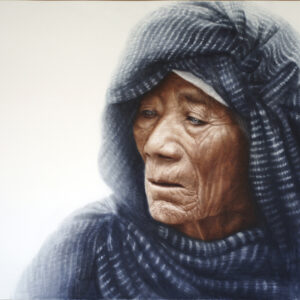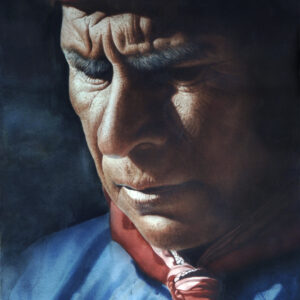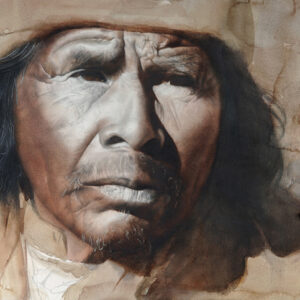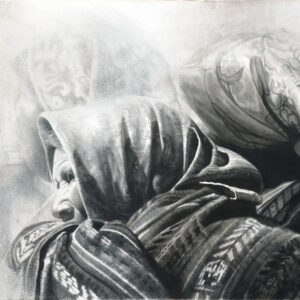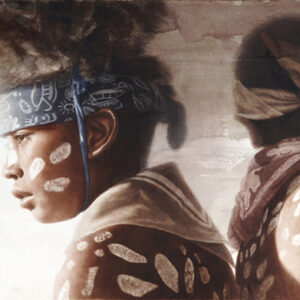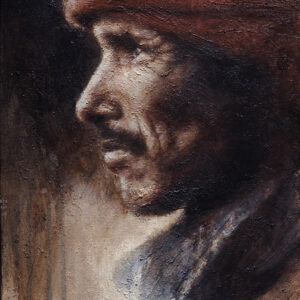Roots Series
The Roots series arises with the intention of showing people and faces that have been little visible or represented in figurative painting, or that have been shown from a rather documentary, aesthetic or decorative perspective. Our identity resides in our body and in our face and it is there where the personal and political intersect. The representation of the face and the body is never neutral, and it is our responsibility as artists to be aware of this. The conventions, convictions and dynamics of society are shown through the way we decide to represent ourselves.
Much of the work done today betrays, or lacks awareness of, or willfully disregards the inherent politics of representation; however, the body is the tool for the relational expression of the private and political. The body is the source of identity, politics and social values. Certain bodies have been excluded from the canonical structures or are simply not considered as the subjects of great art. The face or body that does not satisfy the ideal shape or normative ideas is expelled from tradition, as is the aged body, or skin other than white skin. The body that remains is predominantly the reified, sometimes explicitly sexualized. A body that implies someone else's property, not one's own, to please the other's narratives and fantasies.
In many publications or magazines, indigenous groups are represented either in documentary form, or they are shown as others or as objects of crafts or ornaments. They are not only in museums but in our current societies and historically they have been the object of discrimination and racism in Mexico and Latin America. My intention is to show them as the human beings that they are, to return their humanity, from a horizontal perspective, sometimes confrontational, directing the gaze directly towards the viewer. And through their faces and looks express feelings and emotions known to all. In this way, the conditions of possibility exist to build a bridge loaded with empathy towards the viewer: –“I am like you, although physically we are very different”.
I paint women, many of them indigenous. Historically, women have been represented as objects and what I intend is to show their humanity, as well as a different perspective to the culturally imposed values of beauty. Above all, make indigenous women visible with all their dignity and be theirs in this classist and racist society in which we are inserted. I decide to paint them for many reasons, from the beauty that I find in their faces, their wisdom, internal knowledge or sensations that they give me. In Mexico, indigenous groups are the target of the greatest discrimination, and within the social nucleus, indigenous women are the focus of machismo and misogyny. I want to provide visibility, honor and dignify the roots and especially the indigenous woman.
“My intention is to give voice to the human condition. My passion is to show different realities from my condition as a woman, through figuration, emotions and reason"
–“The Raíces series arose because I felt the need to see images that represented indigenous groups as the human beings they are, not from a dreamy or idealized perspective but from a current, humanist, horizontal and even confrontational perspective.”
“I believe that all art is political, even the one that decides not to be”.
Serie Raíces
La serie Raíces surge con la intención de mostrar personas y rostros que han sido muy poco visibilizados o representados en la pintura figurativa, o que han sido mostrados desde una perspectiva más bien documental, estética o decorativa. Nuestra identidad reside en nuestro cuerpo y en nuestro rostro y es allí donde intersecta lo personal y político. La representación del rostro y del cuerpo nunca es neutral, y es nuestra responsabilidad como artistas ser conscientes de ello. Las convenciones, convicciones y dinámicas de la sociedad se muestran a través de la forma que decidimos representarnos.
Mucho del trabajo que se hace hoy en día traiciona, o carece de conciencia, o desprecia de manera voluntaria la política inherente de la representación; sin embargo, el cuerpo es la herramienta de la expresión relacional de lo privado y político. El cuerpo es la fuente de identidad, política y valores sociales. Ciertos cuerpos han sido excluidos de las estructuras canónicas o simplemente no se consideran como los temas del gran arte. El rostro o cuerpo que no satisfice la forma ideal o las ideas normativas es expulsado de la tradición, como lo es el cuerpo envejecido, o las pieles distintas a la piel blanca. El cuerpo que permanece es predominantemente el cosificado, a veces sexualizado de manera explícita. Un cuerpo que implica una propiedad ajena, no propia, para complacer narrativas y fantasías del otro.
En muchas publicaciones o revistas se ve representado a los grupos indígenas ya sea de manera documental, o se les muestra como los otros o como objetos de artesanía o adorno. No sólo están en los museos sino en nuestras sociedades actuales e históricamente han sido el objeto de discriminación y racismo en México y América Latina. Mi intención es mostrarles como los seres humanos que son, retornar su humanidad, desde una perspectiva horizontal, a veces confrontativa dirigiendo la mirada directa hacia el espectador. Y a través de sus rostros y miradas expresar sentimientos y emociones conocidas por todes. De esa manera existen las condiciones de posibilidad para tender un puente cargado de empatía hacia el espectador: –“Yo soy como tú, aunque físicamente seamos muy distintos”.
Pinto mujeres, muchas de ellas indígenas. Históricamente, las mujeres han sido representadas como objetos y lo que pretendo es mostrar su humanidad, así como una perspectiva distinta a los valores de belleza impuestos culturalmente. Sobre todo hacer visible a la mujer indígena con toda su dignidad y ser en esta sociedad clasista y racista en la que estamos insertados. Decido pintarlas por muchas razones, desde la belleza que encuentro en sus rostros, su sabiduría, conocimiento interno o sensaciones que me brindan. En México los grupos indígenas son el objetivo de mayor discriminación, y dentro del núcleo social, la mujer indígena es el foco del machismo y misoginia. Deseo brindar visibilidad, honrar y dignificar la raíz y en especial, a la mujer indígena.
“Mi intención es dar voz a la condición humana. Mi pasión es mostrar realidades distintas desde mi condición como mujer, por medio de la figuración, emociones y razón”
–“La serie Raíces surge porque sentía la necesidad de ver imágenes que representaran los grupos indígenas como los seres humanos que son, no desde una perspectiva ensoñadora o idealizada sino actual, humanista, horizontal e incluso confrontativa”.
“Creo que todo arte es político, aún aquel que decide no serlo”.

